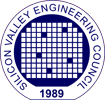
LOCATION ADDRESS (Hybrid, in person or by zoom, you choose)
Valley Research Park
319 North Bernardo Avenue
Mountain View, CA CA 93043
If you want to join remotely, you can submit questions via Zoom Q&A. The zoom link:
[https://acm-org.zoom.us/j/99660184625?pwd=jiGdjGVBkL13e3wSDedeQ2wY3IFDbV.1](https://acm-org.zoom.us/j/99660184625?pwd=jiGdjGVBkL13e3wSDedeQ2wY3IFDbV.1)
Join via YouTube:
[https://youtube.com/live/XKdW7AoqYYY?feature=share](https://youtube.com/live/XKdW7AoqYYY?feature=share)
AGENDA
6:30 Door opens, food and networking (we invite honor system contributions)
**7:00** SFBayACM upcoming events, introduce the speaker
7:15 speaker presentation starts
8:15 – 8:30 finish, depending on Q&A
Join SF Bay ACM Chapter for an insightful discussion on:
In 2012 a New York Times reporter Steve Lohr investigated the modern history of the phrase Big Data and attributed it to the speaker, who started using it in the early 1990s at Silicon Graphics (SGI). His article generated requests by Silicon Valley meetup groups, so the speaker generated a talk on the long history of big data, which arguably started earlier, but certainly by the 1890 census’ use of Hollerith punch card machines.
The talk covered history through the 1990s, especially at SGI, with some updates for the then-present 2013 and thoughts about futures.
History is always important to understand the present and the future, so this talk repeats much of the history and 2013 views, but adds views on important Big Data changes since, especially the rise of AI.
Speaker Bio:
Dr John Mashey started programming IBM and Univac mainframes in 1967 and has been an ACM member ever since.
During 1973-83 he worked at Bell Laboratories, at first on the Programmer’s Workbench version of UNIX, then managed a data mining project mostly built of UNIX shell and awk scripts, via an agile-like development approach. As a 4-year ACM National Lecturer spoke to local chapters in 100+ talks, of which the most popular was (ironically, given later Big Data) “Small Is Beautiful and Other Thoughts on Programming Strategies”.
He then moved to Silicon Valley. At MIPS Computer Systems 1985-92, he managed operating systems, networking and Q/A, helped design the MIPS RISC architecture and various chips, including the first 64-bit microprocessor, was heavily involved in efforts to promote 64-bit computing and evolve the C language as needed.
He was a cofounder of the SPEC benchmarking group, and ended as VP.
At SGI 1992-2000 he was Chief Scientist, later VP as well, and one of the architects of SGI NUMAflex-based supercomputers, Origin 3000/Altix, but spent half his time talking to leading customers, often with bleeding-edge problems.
He started using “Big Data” in frequent customer talks starting in 1993 to cover applications that had to handle extreme data, without necessarily needing 3D graphics or typical scientific/engineering floating point number crunching. By 1996 it had become an SGI marketing theme and parts of several lines of business.
After “retiring” in 2001, he often consulted for venture capitalists and technology companies, including Nvidia, where 2011-13 efforts led to 18 patents. He was a Founding Member of the Computer History Museum and a Trustee 2000-23.
For more, see [https://en.wikipedia.org/wiki/John_Mashey](https://en.wikipedia.org/wiki/John_Mashey)
—
Valley Research Park is a coworking research campus of 104,000 square feet hosting 30+ life science and technology companies. VRP has over 100 dry labs, wet labs, and high power labs sized from 125-15,000 square feet. VRP manages all of the traditional office elements: break rooms, conference rooms, outdoor dining spaces, and recreational spaces.
As a plug-and-play lab space, once companies have secured their next milestone and are ready to expand, VRP has 100+ labs ready to expand into.




